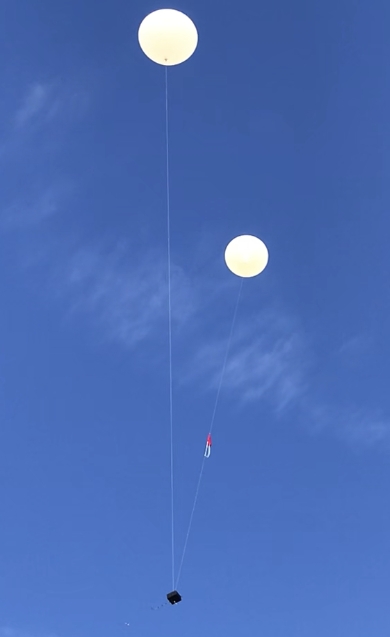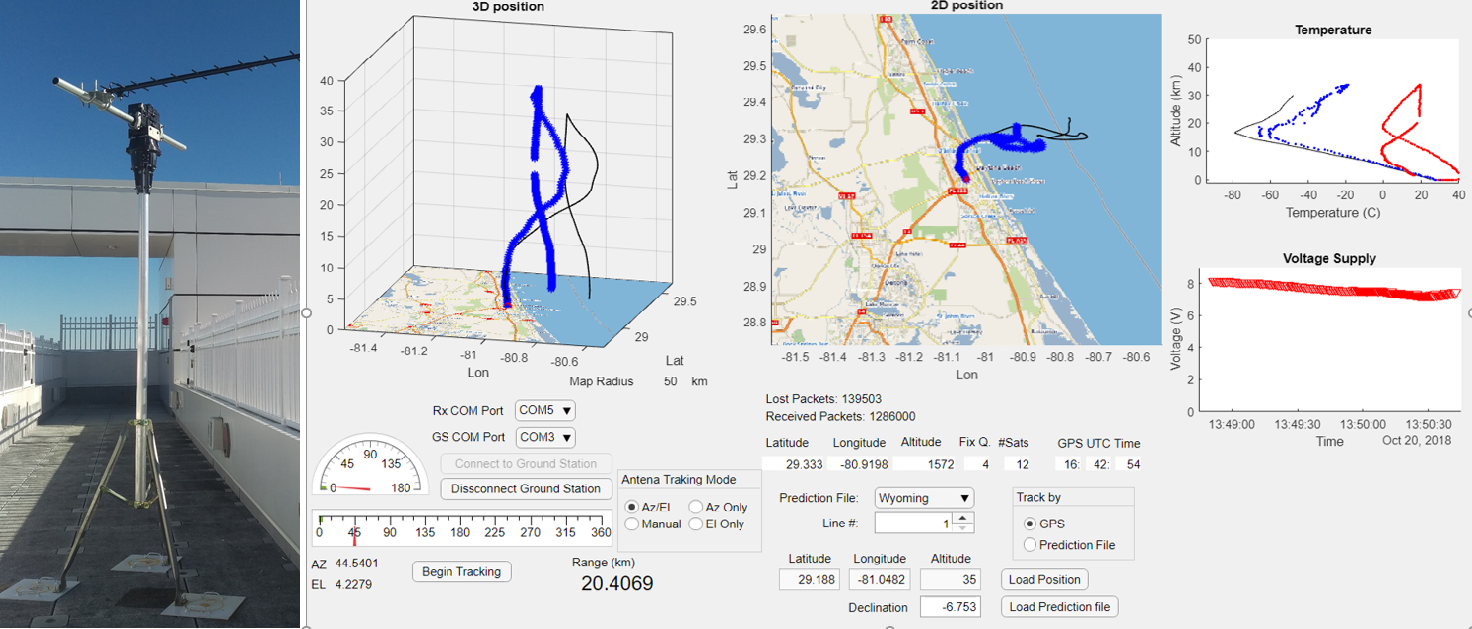SAIL students have been launching high altitude balloons since 2008. The balloons reach an average altitude of 32 km (105,000 ft). The standard payload includes pressure sensor, temperature sensor, 9 degrees of freedom sensor, GPS, radio, and housekeeping sensors along with the CPU board and a battery based power supply. The payload is tracked autonomously by a ground station high gain antenna based on telemetry received.
SAIL is part of a 2017 funded AFOSR MURI project named HYFLITS. This is a 5-yr effort to resolve significant operational issues concerning hypersonic vehicle aerothermodynamics, boundary layer stability, and aero-optical propagation. In-situ turbulence measurements along with modeling will quantify spatiotemporal statistics and the dependence of stratospheric turbulence on underlying meteorology to a degree not previously possible. Lead institution is Univ of Colorado Boulder, with participation from University of Minnesota and Embry-Riddle Aeronautical University.
Data from high altitude balloons (HAB) sampling at 1-2 kHz is required to characterize turbulence to the inner-scale, or smaller, over altitudes from 20 km to 35+ km. SAIL is developing strategies to increase the reliability of conventional latex balloons to consistently achieve altitudes of about 35 km (115 kft) as well as offer controlled descent enabling unperturbed environmental measurements on the downleg, while using as much as possible commercial-off-the-shelf (COTS) components.

A double balloon launch from Daytona Beach for the AFOSR MURI project. One balloon is cut off and released at a preset altitude and the payload does a slow descent under the second balloon.
A field deployable ground station using Yaesu G5500 rotor tracks the balloons autonomously based on GPS coordinates received in the telemetry. The ground station GUI shows the predicted path vs the actual path, some housekeeping sensor data, as well as the balloon instantaneous azimuth and elevation. A poster on this effort was recently presented at the Fall 2018 AGU meeting. This poster can be downloaded here. We have so far successfully tracked the balloon upto a range of 167 km and a max downlink data throughput of 100 kbps.
